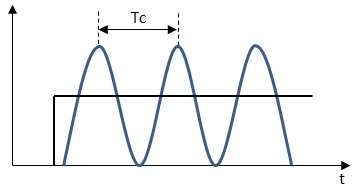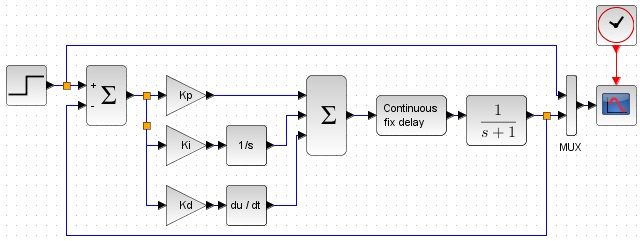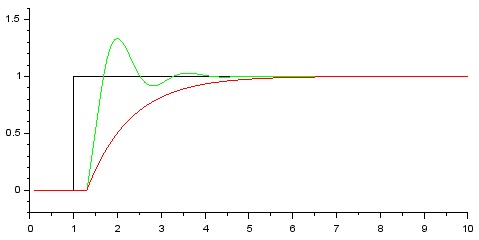Ziegler-Nichols ultimate sensitivity method |
|||||||||||
|
・In Japanese
■What is the Ziegler-Nichols ultimate sensitivity method?
This section describes the Ziegler-Nichols ultimate sensitivity method, which is one of the PID control gain setting methods.
This is a method that can empirically determine the gain when the characteristics of the controlled object cannot be expressed by a physical model.
In addition, this method is not limited to the control target of localization* like the step response method, and is also effective for non-localization.
Furthermore, it cannot be used for controlled objects such as first-order delay and second-order delay, but it is effective for controlled objects of "dead-time and first-order delay element" or "dead-time and integral system".
There is a pole arrangement method as another gain setting method.
■How to tune the ultimate sensitivity method.
Configure PID control for P control as follows. ■Tuning the ultimate sensitivity method with Scilab
Use Scilab to tune the gain. The dead time L = 0.3 seconds, the Kp where continuous vibration occurs is 5.89, and the period Tc is 1.1 seconds. ■Confirm the operation result of PI control by the ultimate sensitivity method
The effect of the ultimate sensitivity method is confirmed by PI control.
|
|
|||||||||








